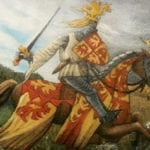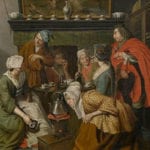 Weird Stuff
Weird Stuff  Weird Stuff
Weird Stuff  Our World
Our World 10 Ways Your Christmas Tree Is More Lit Than You Think
 Movies and TV
Movies and TV The 10 Coolest Stars to Set Sail on The Love Boat
 History
History 10 Things You Didn’t Know About the American National Anthem
 Technology
Technology Top 10 Everyday Tech Buzzwords That Hide a Darker Past
 Humans
Humans 10 Everyday Human Behaviors That Are Actually Survival Instincts
 Animals
Animals 10 Animals That Humiliated and Harmed Historical Leaders
 History
History 10 Most Influential Protests in Modern History
 Creepy
Creepy 10 More Representations of Death from Myth, Legend, and Folktale
 Technology
Technology 10 Scientific Breakthroughs of 2025 That’ll Change Everything
 Weird Stuff
Weird Stuff Ten Bizarre Facts About The Doge Meme
 Our World
Our World 10 Ways Your Christmas Tree Is More Lit Than You Think
 Movies and TV
Movies and TV The 10 Coolest Stars to Set Sail on The Love Boat
Who's Behind Listverse?

Jamie Frater
Head Editor
Jamie founded Listverse due to an insatiable desire to share fascinating, obscure, and bizarre facts. He has been a guest speaker on numerous national radio and television stations and is a five time published author.
More About Us History
History 10 Things You Didn’t Know About the American National Anthem
 Technology
Technology Top 10 Everyday Tech Buzzwords That Hide a Darker Past
 Humans
Humans 10 Everyday Human Behaviors That Are Actually Survival Instincts
 Animals
Animals 10 Animals That Humiliated and Harmed Historical Leaders
 History
History 10 Most Influential Protests in Modern History
 Creepy
Creepy 10 More Representations of Death from Myth, Legend, and Folktale
 Technology
Technology 10 Scientific Breakthroughs of 2025 That’ll Change Everything
10 Highwaymen Who Gallantly Terrorized Britain
The words “Stand and deliver!” conjure up images of handsome, gallant gentlemen on well-groomed horses, their faces hidden by masks, relieving carriage passengers of their worldly possessions. It’s an idealized image of men who were oftentimes little more than robbers only looking out for themselves, but, oddly, it was an image that many highwaymen achieved even during their own day.
For some reason, these men (and, occasionally, women) escaped the stigma that is associated with most criminals, becoming a gallant class of selfless individuals who robbed the rich to give to the poor. Unfortunately, the poor didn’t always figure into the equation.
10Claude Duval

Claude Duval (or Du Vall) is credited with being one of the first great gentlemen highwaymen. Born in France in 1643, Duval emigrated to England after meeting a group of Royalist exiles, who were laying low in France during the Civil War. Once the war was over, Duval not only moved to England, but got an intimate look at the life of English nobility. Not content to live off a servant’s wage, he turned to the life of a highwayman, and he did it in style.
One of the most famous stories about him is his robbery of a carriage on Hampstead Heath. Here, upon meeting the beautiful young wife of the elderly knight he was robbing, Duval danced with the young woman on the side of the road. He then took only a portion of the money the knight was carrying as payment for the entertainment. He was well known but, by all reports, far from reviled. After fleeing to France for a short time to let the heat die down, he returned to England and was arrested during a drunken night out.
Once his death sentence was given, it was said that a number of his previous victims (mostly women that had been wooed by his courtly demeanor) tried to speak up on his behalf to get him a pardon. It didn’t work. He was executed in 1670, and his body was taken to lie in state at a local tavern. There were so many mourners present that the wake was cut short, as it was deemed rather unseemly.
9Jack Sheppard
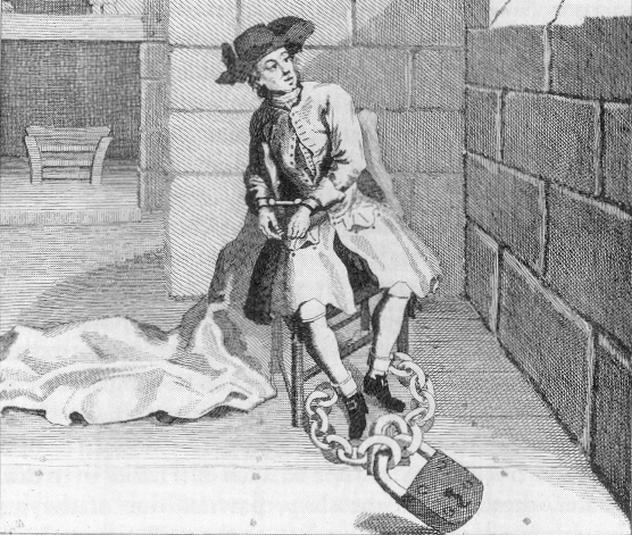
By the time Jack Sheppard was 20 years old, the failed carpenter had turned to highway robbery to support his drinking and whoring habits. He was more famous for his escapes than his actual crimes, though, having bested law enforcement a number of times, to the delight of the masses.
In 1723, he was arrested for pickpocketing. When one of his most devoted prostitute companions came to visit him, she was promptly arrested as well. They made their escape from New Prison, Clerkenwell by hopping a 6.7-meter (22 ft) wall. A year later, the same girl distracted the guards while Sheppard escaped through a high, narrow window in Newgate. The same year, Sheppard escaped from Newgate once again by getting out of his handcuffs, picking a number of locks, and finally making it to the prison’s roof. He was arrested a short time later during a drunken celebration and was sentenced to hang.
He had an escape plan for that, too, and it involved author Daniel Defoe. Defoe, who had already ghostwritten an autobiography that detailed Sheppard’s crimes and escapes, was to secure his body after he was hanged and attempt to revive him. Unfortunately for Sheppard, he was such a popular figure that the crowd that had assembled at his hanging rushed the gallows as he dropped, grabbing him and pulling him downward to give him a less painful, more dignified death than the slow strangulation that he had counted on.
8Isaac Darkin

Isaac Darkin was 18 years old when he robbed his first victim. He was promptly arrested. Because of his age, he escaped the death penalty on the condition that he enlist in the military. By all appearances, he agreed, boarding a ship bound for the West Indies. He jumped ship before it had even sailed from the Thames, bribing a merchant vessel to let him aboard. Once he was back on land, he changed his name to Dumas and took to making a living robbing people throughout the Western parts of England.
Deciding that he needed a real career—and a respectable one, should anyone start asking questions—Darkin enlisted in the Navy, while continuing his career as a highwayman and ladies’ man. He was well known for his dislike of crude language and his invariably proper, well-dressed, and elegant appearance. It was when he robbed Lord Percival that he finally had another run-in with the law. Denying his identity and nationality didn’t actually fool anyone, but Darkin was still released on a technicality, much to the dismay of the women who had taken to visiting him in jail. He headed to London, where he was arrested on another charge of highway robbery and, this time, found guilty. He was executed in 1761, when he was 21 years old.
7John Rann

John Rann, also known as “Sixteen String Jack,” was one of the first highwaymen (and indeed, criminals) to make his occupation as much about his celebrity status as about his actual crimes or the spoils of his robberies. He was a larger-than-life, over-the-top figure whose nickname came from his extravagant dress. He was always perfectly groomed and gentlemanly in his appearance, always wearing silk breeches that had eight silver strings hanging from them. He encouraged all rumors that were spread about him, and consequently, there are a couple of different versions of his story.
He was born somewhere around 1752, and at some point, he entered life as a coachman. He was strongly associated with several different women. His apprenticeship didn’t give him enough income to support his lifestyle or his women, so he turned to highway robbery. Many of his crimes were of the flamboyant, drunk and disorderly type. It was ultimately an attempt by one of his mistresses (who quickly gave up his name) to sell a stolen watch that earned Rann his first arrest. When he got off, it only made him that much more confident. He boasted to full pubs of his highwayman lifestyle and predicted his own early death. He got off on minor charges of attempting to climb through windows into homes where the ladies always seemed to come to his defense.
It was a similar situation—his female associates trying to sell stolen property—that led to Rann’s final trial, after he and an associate robbed a clergyman riding through Ealing. His female associates got off, stating that they unknowingly traded clean clothes for the stolen property, but Rann himself was executed in December 1774.
6Sir Humphrey Kynaston
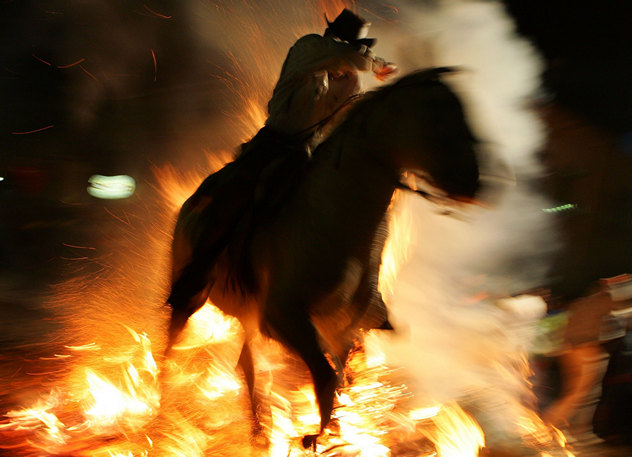
Humphrey Kynaston was a 15th-century highwayman who descended from Welsh royalty and was said to ride the devil as his horse. His great-grandfather was the Duke of Gloucester and his cousin was a lord, but that certainly didn’t help keep Kynaston on the right side of the law. He had inherited family property at Myddle Castle, but he let it run into ruin as he set up camp in Nesscliffe, Shropshire. The area was wool country, and there were plenty of merchants returning home with gold and silver after selling their precious wool. Kynaston hid in the mountains of Shropshire, and according to stories, he was one of the highwayman outlaws who was well loved by the poor.
Like Robin Hood, he was said to steal from the rich and give to the poor, who were so grateful that they would keep his horse fed and watered and bring him food when he was forced into hiding by the law. It was his horse—named Beelzebub and said to be the devil himself—that legends credit with Kynaston’s success. Stories are told about Kynaston fleeing the sheriff by clearing rivers in a single jump, and, in one tall tale, leaping from the top of Nesscliffe Hill and landing 14.5 kilometers (9 mi) away.
No one’s quite sure just what happened to Kynaston. Some stories say that he took ill and died in his cave. Others say that he changed his ways, was pardoned, and lived out the remainder of his days in peace. Regardless of which is true, his devil horse seems to have kept him out of the hangman’s noose that ended the lives of so many other highwaymen.
5George Lyon
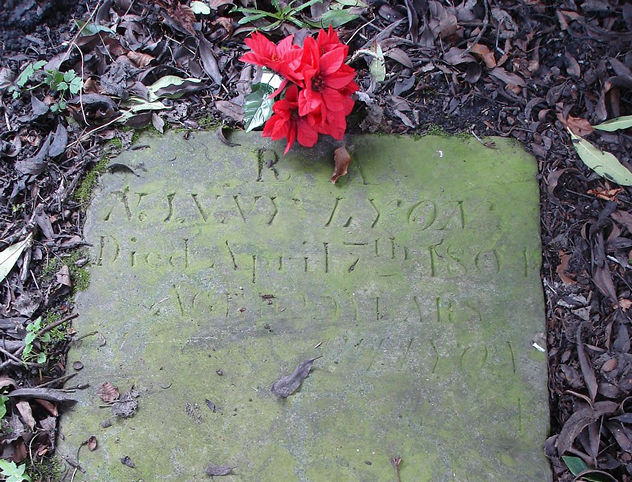
It was said that the devil followed Lyon’s body when it was brought back to the town that he had terrorized for decades. This unleashed violent thunderstorms on the kindly innkeeper that had volunteered to bring the gentleman robber home after his execution. George Lyon, along with two accomplices, was hanged for burglary in April 1815. It wasn’t the first run-in with the hangman for the self-proclaimed “King of the Robbers.” Thirty years earlier, he had narrowly escaped the noose for a similar crime: robbery.
For 30 years, Lyon and his gang terrorized the town of Up Holland, committing burglary after burglary. Everyone in the town knew that he was guilty, but decades went by with nothing being pinned on him, even when town magistrates offered a reward for any information that would lead to his capture. Finally, the magistrates managed to infiltrate the gang enough to buy back some silver that they had stolen, getting the evidence that was needed to hang Lyon. Reports of his execution say that he painted a dashing figure up on the gallows; at that time, executions were a very public affair and it was important to die well and leave a lasting impression.
Leave a lasting impression he did—along with a number of illegitimate children. (According to local gossip, the dashing burglar was responsible for a number of children born to unmarried women in the village—including children born simultaneously to a mother and daughter.) Lyon’s grave is still in Up Holland and has become something of an attraction. Even though records of him committing highway robbery are few and far between, a Robin Hood–like legend has grown up around him, complete with songs.
4John Nevison
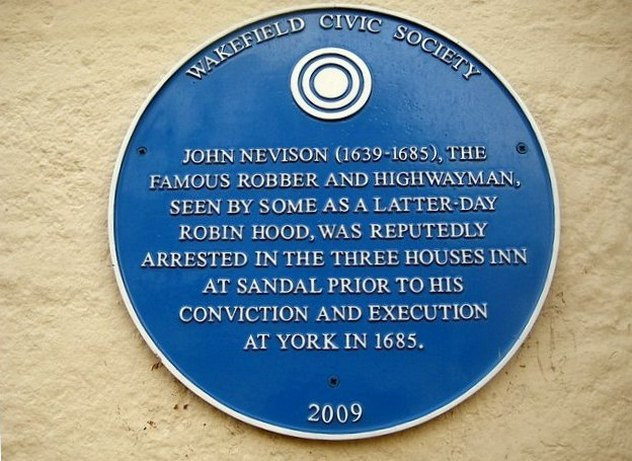
Like many of his contemporaries, much of John Nevison’s life is a blur of truth and fiction. Born somewhere around 1639, he briefly served in the military before returning to his English homeland to look after his ailing father. Unable to get a steady job, Nevison became a highwayman. He was arrested several times, only to keep escaping. Once, he had a friend pretend to be a doctor, declare Nevison dead, and carry him out of the prison in a coffin. Always the thoughtful highwayman, he never killed anyone and targeted only those he thought could afford to lose some money.
His nickname, “Swift Nick,” was said to have been given to him by King Charles II himself. After robbing a man in the morning, Nevison fled 322 kilometers (200 mi) on horseback to play a bowls match with another city’s mayor in the evening. This cemented his alibi for the morning robbery. (The story was later, more famously, attributed to Dick Turpin and his fictional horse, Black Bess.) It wasn’t long after Nevison’s legendary ride that he ended up committing his first murder: killing a constable that tried to arrest him. And it wasn’t long after that he was arrested, tried, and finally hanged in May 1685. The chair that he had fallen asleep in before he was arrested can still be seen in a local church in Wakefield.
3James Maclaine & William Plunkett
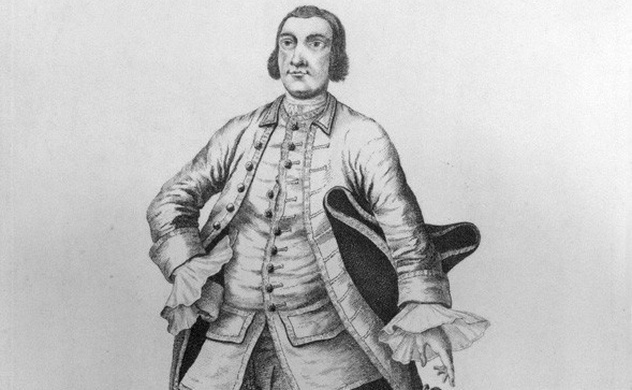
Maclaine and Plunkett are, at a glance, perhaps two of the most unlikely of partners. The well-dressed, if not jowly, son of a Presbyterian minister, Maclaine was a happily married man with two young children, when his beloved wife died. Despondent and no longer able to support himself, he devised a new life plan—find a rich woman, marry her, and live off her money.
He met and befriended a failed chemist named William Plunkett. Together they headed off to London, where they scouted for suitable rich women. The pair quickly ran out of money. Since no suitable prospects had presented themselves, the men turned to highway robbery instead. The only problem with this plan was that Maclaine was, at heart, something of a coward and did little more than look on and shiver with fear while Plunkett did all the dirty work. Eventually, Maclaine stepped up a bit, yet he still sent apology notes to a man named Horace Walpole—after robbing and nearly killing him—offering to give him the chance to buy his stolen goods back.
Eventually, Maclaine was put on trial for trying to sell some stolen merchandise that his victim had advertised as having been taken by a highwayman. Maclaine was put on trial, found guilty, and hanged in 1750. Plunkett simply disappeared and was not a part of the trial.
2Katherine Ferrers

Lady Katherine Ferrers was, depending on the account, 12 or 14 years old when she married Sir Thomas Fanshaw, himself 16. They lived at the Ferrers’ family home in Hertfordshire, and all accounts agree that Katherine was a bit mad. Unbeknownst to her husband, the highway robber who was preying on his dinner guests after they left the safety of his home was Katherine herself. Hostess by evening, she would retire to her chambers as their guests left. Here, she would trade her dresses for the black pants and cloak of a highwayman, mount her black horse, and ride into the night to rob those she’d just dined with.
Along the way, she met a farmer named Ralph Chaplin, who had nighttime activities similar to hers. They partnered for a while, but he was eventually caught and hanged by the roadside. Katherine herself had a fairly successful career that was brought to an abrupt end when a passenger in a wagon she was trying to rob shot her. She made it back to her family estate before she died, aged 26.
It wasn’t just the mysterious robberies that stopped with her death. Fires that had been breaking out across the countryside also stopped, cows were no longer shot dead in their fields, and no one else was killed by a mysterious, unseen assailant on their own property. None of these crimes were ever directly connected to Katherine, but it was thought to be more than a coincidence that they ended with her death. Her nocturnal hobbies cost her a place in the family crypt. She was buried at night in the cemetery of St. Mary’s Church.
1Dick Turpin
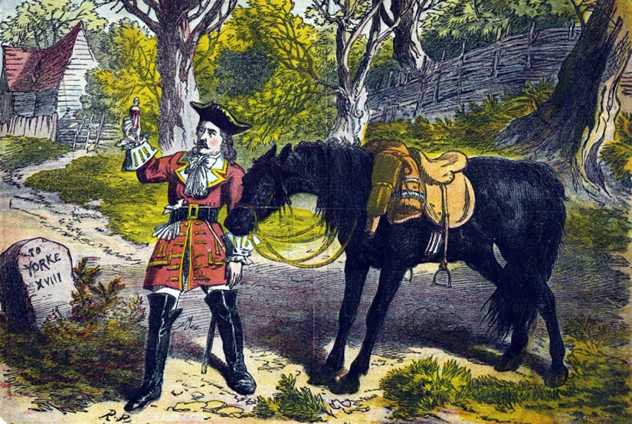
Dick Turpin is, perhaps, one of the best known of Europe’s highwaymen, and he’s possibly the worst example of what the idea of a gentleman robber was supposed to be. Born in 1705 in Essex, Turpin couldn’t be bothered to put in the hard work that would have allowed him to make a good, honest living as a butcher, following in his father’s footsteps. He joined a gang instead, raiding houses in the London area, stealing what he could, and outright destroying the rest. Turpin was one of the last members of the gang to be caught; he had since moved on from robbing houses to holding up carriages that were traveling to and from London.
The fictional stories that grew up around Turpin were largely just that: fiction. Turpin became a character in books that embellished the details of his life. Added to the story were dashing good looks, a beautiful, devoted black horse, and a family inheritance that Turpin was supposedly cheated out of. The historical Turpin was a cold-hearted murderer, whose egotistical boasting and a letter back home eventually led to his capture, trial, and execution. It was only after his death and the publishing of a book called Rockwood in 1834, that he was catapulted to fame as a gentleman robber. Perhaps more fitting to his memory was the fate of his corpse. The night that he was buried, Turpin was dug up by grave robbers, who sold his corpse to a doctor for dissection. His body was discovered missing, recovered, and reburied, while the doctor was fined.




